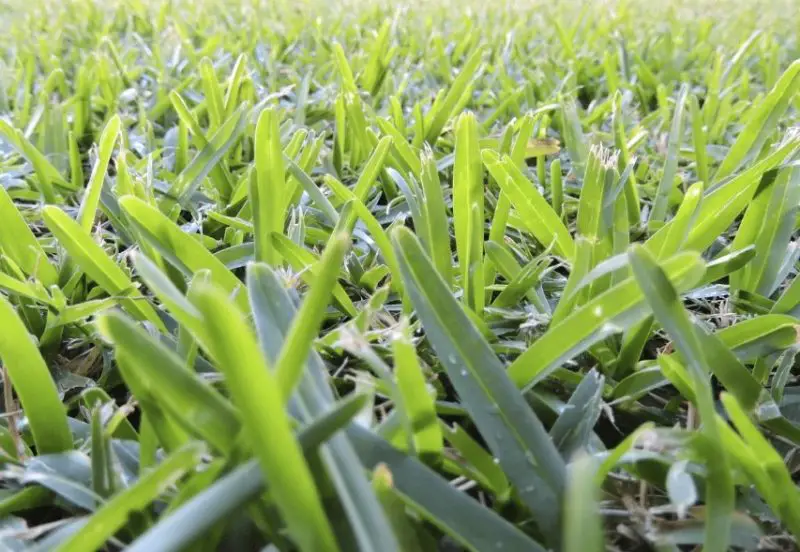Buffalo grass (Bouteloua dactyloides) is an excellent option for homeowners looking for a low-maintenance, drought-tolerant lawn. Native to North America, this warm-season grass has adapted to dry conditions, making it a durable choice for many types of landscapes. Its resilience and low water requirements make it a popular alternative to conventional turfgrasses.
In this guide, we’ll cover everything you need to know about Buffalo grass care, from planting to maintenance, and how to ensure it thrives in your garden.
What Is Buffalo Grass?

Buffalo grass is a perennial, warm-season grass native to the prairies of North America. It belongs to the Poaceae family and is known for its ability to survive in hot, dry conditions. It spreads via stolons, creating a dense sod that helps it thrive in various soil types. This grass grows in clumps and typically reaches 8 inches in height and 12 inches in width.
One of the major benefits of Buffalo grass is its drought tolerance. With long roots that penetrate deep into the soil, it can survive with minimal water, making it ideal for xeriscaping and erosion control on slopes.
Key Characteristics of Buffalo Grass:
- Warm-season grass
- Spreads by stolons
- Drought-tolerant
- Grows in clumps
- Ideal for erosion control
- Soft texture, great for barefoot areas like around pools
Pros and Cons of Buffalo Grass
Like any turfgrass, Buffalo grass comes with its advantages and disadvantages. Here’s a breakdown:
Pros:
- Extremely hardy: Buffalo grass can withstand harsh conditions, including drought and heat.
- Drought-tolerant: Its deep root system allows it to survive with minimal water.
- Low maintenance: Buffalo grass requires less frequent mowing than other turfgrass options, especially if left to grow naturally.
- Attracts wildlife: If left unmowed, it produces flowers that attract birds and butterflies.
- Soft texture: Comfortable to walk on, making it a great option for play areas and poolside lawns.
Cons:
- Not ideal for cold climates: Being a warm-season grass, it doesn’t perform well in cooler weather and will go dormant during the winter months.
- Not shade-tolerant: Buffalo grass requires full sun and performs poorly in shaded areas.
- Foot traffic tolerance: While it can handle some foot traffic, it’s not as resilient to heavy use compared to other grasses like Bermuda or fescue.
Ideal Growing Conditions for Buffalo Grass
For best results, ensure your Buffalo grass is planted in the right environment. Here’s what you need to know:
Climate and Sunlight
Buffalo grass thrives in warm climates and performs best in regions with hot summers. It requires full sun to grow well and will not thrive in shaded areas. Make sure the lawn or area where you plant Buffalo grass receives at least 6-8 hours of direct sunlight daily.
Soil Type
This grass prefers well-draining soil with a good amount of clay or loam. It can tolerate a range of soil pH, from slightly acidic to slightly alkaline (6.0 to 7.5). Buffalo grass can adapt to poorer soils, but proper soil preparation will ensure it thrives.
Water Requirements
One of the biggest benefits of Buffalo grass is its ability to survive on very little water. It has adapted to the dry conditions of North America’s prairie regions. Once established, it requires minimal irrigation, making it a great option for homeowners looking to reduce water consumption.
Planting Buffalo Grass
Establishing a Buffalo grass lawn can take some time, but the effort is worth it for those seeking a low-maintenance lawn. You can plant Buffalo grass from seed, plugs, or sod. Here’s how each method works:
Seed Method
Planting Buffalo grass seeds can be a cost-effective option but requires patience. Here are some tips for success:
- Timing: Sow the seeds between April and September, when the soil temperature has reached at least 60°F (15°C).
- Light requirements: The seed needs light to germinate, so avoid covering it with too much soil.
- Moisture: Keep the soil moist (but not waterlogged) until the seeds germinate and the seedlings are established.
Plug Method
Starting a Buffalo grass lawn from plugs can speed up the establishment process compared to seed. Plugs should be spaced 5 to 12 inches apart depending on how quickly you want the lawn to fill in. Keep the soil moist until the plugs take root.
Sod Method
For the fastest results, opt for Buffalo grass sod. This method provides instant coverage and is ideal if you want an established lawn quickly. After laying sod, keep the soil moist until the roots have established.
Soil Preparation
No matter which planting method you choose, proper soil preparation is crucial. Test the soil’s pH and amend it as needed. Remove any weeds or existing turf, and work compost or organic matter into the soil to improve its structure and fertility.
Buffalo Grass Care and Maintenance
Once established, Buffalo grass is relatively low-maintenance. Here are the key aspects of Buffalo grass care:
Mowing
Mowing Buffalo grass is optional. If you prefer a natural look, you can leave it untouched and allow it to grow up to 8 inches tall. For a more manicured appearance, mow the grass infrequently, keeping it at a height of around 5 inches.
Cultivars like ‘Prestige’ are ideal for a no-mow lawn, as they stay shorter and require less frequent trimming.
Watering
Once established, Buffalo grass is highly drought-tolerant and will need little supplemental watering. However, during prolonged dry spells, an occasional deep watering will help keep it healthy.
Fertilization
Fertilize Buffalo grass twice a year: once in late spring and again in midsummer. Use 1 pound of nitrogen per 1,000 square feet for each application. Avoid over-fertilizing, as this can encourage weed growth and make the lawn more susceptible to disease.
Weed Control
Weed control can be tricky with Buffalo grass. Pre-emergent herbicides, such as dithiopyr, are safe to use in the spring. For post-emergent control, it’s best to wait until the grass is dormant in late fall or winter before applying glyphosate to tackle persistent weeds.
Pests and Diseases
Buffalo grass is relatively resistant to pests and diseases. However, it’s always good to keep an eye on potential issues. The most common problems include:
- Grubs: These pests can damage the root system of Buffalo grass, so it’s important to treat for them early if you notice an infestation.
- Brown patch: This fungal disease can occur during periods of high humidity. To avoid this, water early in the morning and improve air circulation around your lawn.
Cost of Buffalo Grass
The cost of establishing a Buffalo grass lawn depends on the planting method:
- Seeds: Buffalo grass seed costs around $50 per pound, covering about 330 square feet.
- Plugs: Plugs cost around $1 each. A flat of 70 plugs typically covers 70 square feet.
- Sod: Sod is the most expensive option, costing about $250 per pallet, which covers 450 square feet.
Summary: Key Takeaways
Buffalo grass is a warm-season grass that offers a sustainable, low-maintenance alternative to conventional turfgrass. It’s perfect for homeowners who want to reduce watering and mowing while attracting wildlife to their gardens. With proper planting and care, Buffalo grass can provide a beautiful, resilient lawn that thrives even in drought-prone areas.
Benefits of Buffalo Grass:
- Drought tolerance
- Low maintenance
- Excellent for erosion control
- Native to North America
- Soft texture, ideal for barefoot areas
If you’re ready to make the switch to a more sustainable lawn, Buffalo grass is a great choice that will reward you with a beautiful, eco-friendly landscape for years to come.






